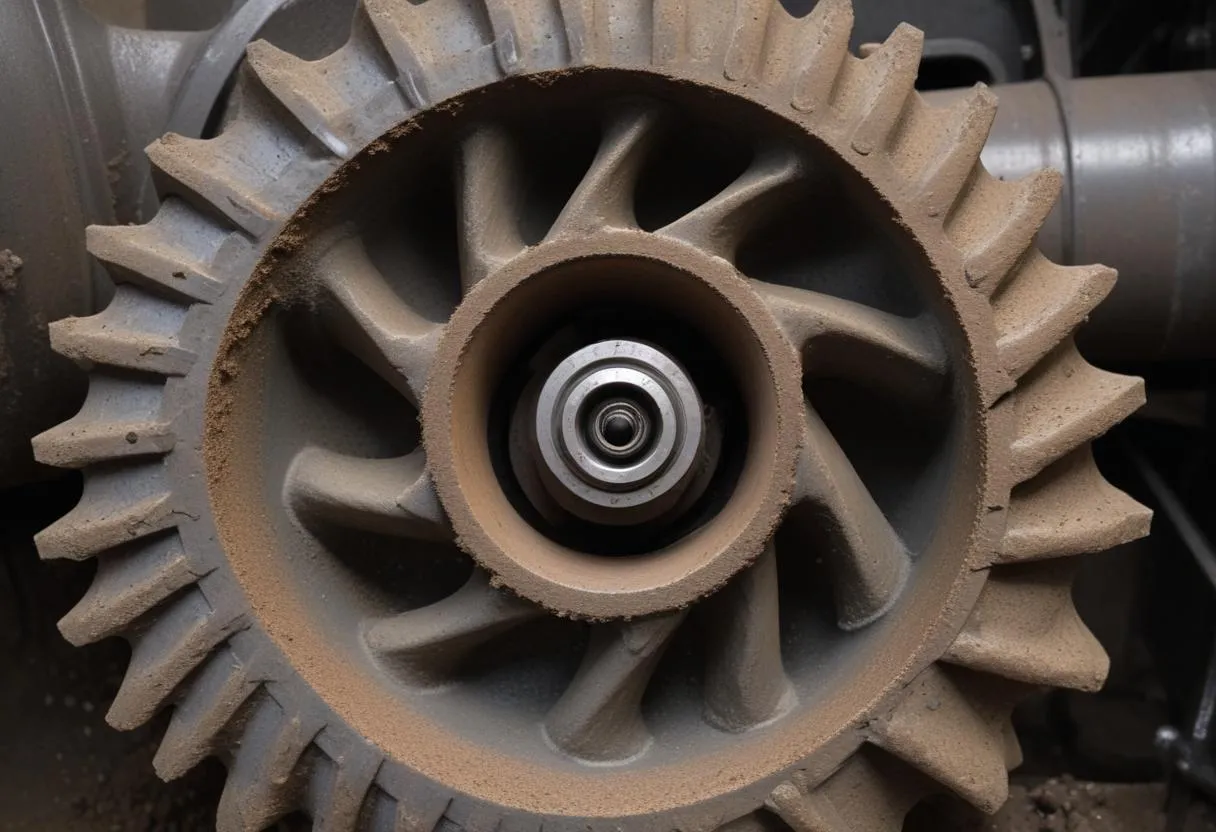 Slurry pumps are specialized devices designed to handle abrasive solids mixed with fluids. These pumps play a crucial role in sectors like mining, wastewater treatment, and the construction industry. There are several types of slurry pumps adapted for different operations and conditions. Below we examine the primary categories of these pumps and their specific applications.
Slurry pumps are specialized devices designed to handle abrasive solids mixed with fluids. These pumps play a crucial role in sectors like mining, wastewater treatment, and the construction industry. There are several types of slurry pumps adapted for different operations and conditions. Below we examine the primary categories of these pumps and their specific applications.
Centrifugal Slurry Pumps are the most widely used type of slurry pump. They operate using a series of impellers to transfer energy from the motor to the slurry. The impellers rotate, creating centrifugal force which pushes the slurry through the pump. These are most effective for transporting slurries from one point to another, easily handling mixtures of water with sand, clay, or other abrasive particles.
| Type | Main Use | Description |
|---|---|---|
| Horizontal Slurry Pumps | General applications | Mounted horizontally, these are the standard choice for many industries. |
| Vertical Slurry Pumps | Sumps and pits | Installed vertically, making them ideal for pumping fluids with solids from pits. |
Positive Displacement Slurry Pumps work on a different principle, where they move the slurry by enclosing a fixed amount and displacing it into the discharge pipe. These pumps are particularly useful when precise volumetric flow management is required, and in applications where maintaining a stable flow is more crucial than handling high volumes.
- Plunger Pumps: Used for high-pressure applications, often where high-viscosity slurry needs to be pumped over sustained periods.
- Screw Pumps: These use two screws turning against each other to move the slurry. They are effective for handling delicate or viscous slurries without the impurities being broken down in the process.
Submersible Slurry Pumps, designed to operate while submerged in the liquid, these pumps are typically used in deep water or where space constraints prevent the use of more extensive equipment. They are robust and convenient for sites where the water table is high or in mining operations.
Peristaltic Slurry Pumps utilize a completely different method, involving a tubular element squeezed by rollers to move the slurry. This type of pump is highly advantageous for pumping abrasive slurries because its design reduces contact between the mechanism and the material, thereby minimizing wear.
Each type of slurry pump is designed to fulfill specific requirements, determined by factors such as slurry type, concentration of solids, and the nature of the site. When choosing the best pump for an application, it is critical to consider the attributes of the material being pumped, including particle size, corrosiveness, and abrasiveness, as well as environmental situations like the presence of explosive or flammable gases. Understanding these parameters helps in selecting a pump that not only meets the operational demands but also works efficiently with minimal downtime, ensuring productivity and lower maintenance costs.
Operational challenges in slurry handling
Handling slurries introduces a set of operational challenges that are distinct from those of handling clear fluids. These challenges involve the complex nature of the slurry itself, which typically contains a mixture of solid and liquid, where the characteristics of the solid particulates significantly influence the handling process. Addressing these challenges is critical to ensure efficient, reliable, and cost-effective operations.
Abrasion and Wear: One of the foremost challenges in slurry handling is the abrasion caused by solid particles in the slurry. This abrasion can lead to severe wear on the pump components, particularly the impeller and the casing. The rate of wear is generally influenced by the hardness, concentration, size, and shape of the particles. Some slurry compositions, especially those found in mining or mineral processing operations, can be particularly abrasive, leading to faster degradation of pump parts.
Corrosion: Besides abrasion, corrosion is another significant challenge. Chemical properties of the fluid, such as pH and chemical composition, can aggressively corrode the materials used in pump construction. In some cases, abrasion combined with corrosion—often referred to as corrosion-abrasion—can further accelerate the wear process.
Variable Flow Conditions: Slurry pumps often operate under fluctuating flow conditions. Changes in slurry characteristics, such as concentration and particle size, can alter the flow dynamics, impacting the pump’s efficiency and increasing the risk of blockages and wear.
Settling and Sedimentation: If the flow rate is not maintained properly, there is a risk that heavier particles might settle within the pump or the piping system, leading to sedimentation. This can cause clogs or excessive wear and might require frequent stops for manual desilting and cleaning.
Sealing Challenges: Slurry pumps require specialized sealing systems to handle the abrasive nature of the slurry. Standard seals might fail quickly when exposed to abrasive particles, leading to leakage, which can compromise pump performance and safety.
Energy Efficiency: Slurry pumping requires more power compared to water due to the presence of solid particles in the fluid. The energy cost can be a significant part of the operational budget, especially in large-scale operations.
| Challenge | Impact on Operation |
|---|---|
| Abrasion and Wear | Reduces the lifetime of pump components, leading to frequent replacements and downtime. |
| Corrosion | Chemical attack on pump materials, potentially leading to leaks and failures. |
| Variable Flow Conditions | Can cause inefficiencies and operational instability. |
| Settling and Sedimentation | Leads to blockages and mechanical damages, interrupting continuous operation. |
| Sealing Challenges | Increases maintenance demands and risks of environmental contamination due to leaks. |
| Energy Efficiency | Higher operating costs due to increased power consumption. |
To overcome these challenges, operators may invest in specialized pump designs that use materials resistant to wear and corrosion, such as high-chrome alloys or elastomers, and incorporate robust sealing mechanisms. Moreover, ongoing monitoring of pump performance and regular maintenance schedules are crucial to mitigating the effects of these operational challenges, ensuring longevity and efficiency in the harsh environments where slurry pumps operate.
Maintenance and longevity of slurry pumps
 Maintaining and ensuring the longevity of slurry pumps is crucial, given their operational complexity and the harsh environments in which they function. Effective maintenance strategies not only extend the operational life of the pumps but also significantly enhance their efficiency and reliability. To better understand and implement these strategies, it’s essential to recognize the key aspects of maintenance that are unique to slurry pumps.
Maintaining and ensuring the longevity of slurry pumps is crucial, given their operational complexity and the harsh environments in which they function. Effective maintenance strategies not only extend the operational life of the pumps but also significantly enhance their efficiency and reliability. To better understand and implement these strategies, it’s essential to recognize the key aspects of maintenance that are unique to slurry pumps.
Regular Inspection and Monitoring: Consistent inspection and monitoring form the backbone of maintaining slurry pumps. This involves routine checks of critical components such as impellers, casings, seals, and bearings. Wear and tear on these parts can lead to decreased performance or even catastrophic failures if not addressed timely.
- Impellers must be checked for erosion or clogging due to the solids they handle.
- Casings should be inspected for signs of abrasion or cracks which can affect the structural integrity.
- Seals and bearings require frequent evaluation to ensure they are operational and effectively preventing leaks and reducing friction respectively.
Use of Wear-Resistant Materials: Given the abrasive nature of slurry, employing wear-resistant materials in the construction of slurry pumps is vital. Materials like high-chrome alloys, elastomers, and ceramic coatings are favored for their durability and resistance to abrasion and corrosion.
Lubrication and Cooling Systems: Proper lubrication ensures smooth operation of moving parts and reduces overall wear. For cooling, slurry pumps often require external cooling systems, especially when operating in high-temperature environments or handling hot slurries, to prevent overheating which can deform parts and reduce pump life.
Predictive Maintenance: Employing predictive maintenance techniques, such as vibration analysis, thermal imaging, and wear particle analysis, helps in early detection of potential failures. For instance, vibration analysis can indicate an imbalance in the pump or bearing failure before it leads to more significant damage.
Scheduled Cleaning: Slurry pumps need regular cleaning to prevent settling and sedimentation of solids within the pump internals and pipelines. Scheduled cleaning helps in maintaining optimal flow and prevents blockages, reducing the stress on the pump.
Replacement and Repair Schedule: Establishing a planned replacement schedule for critical components is crucial. This proactive approach helps avoid unexpected downtimes and ensures the pump operates at its best efficiency point (BEP). Additionally, training maintenance staff to handle in-field repairs can significantly reduce downtime.
| Maintenance Activity | Frequency | Benefits |
|---|---|---|
| Inspection of wear components | Monthly/Quarterly | Early detection of wear and tear, timely replacement |
| Lubrication and cooling checks | Bi-monthly | Ensures operational smoothness and cooling efficiency |
| Predictive maintenance | As per monitoring system setup | Forecasts failures, optimizes maintenance planning |
| Cleaning cycles | As needed based on slurry properties | Prevents clogs and equipment strain |
Incorporating these maintenance techniques requires a detailed understanding of slurry pump operations and the specific challenges posed by the slurry they handle. Regular training and updates for maintenance teams are essential to keep them abreast of the latest maintenance practices and technologies. With careful implementation of these practices, downtime can be minimized, operational costs reduced, and the life expectancy of slurry pumps significantly extended.